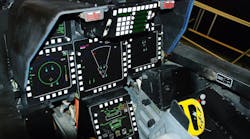Editor in Chief
We’ve seen the end of extremes that have marked the COTS movement over the past decade, thanks to the often-painful real-world lessons learned from military operations in Iraq and Afghanistan.
This emerging development is in stark contrast to the late ’90s and early part of this decade when military systems designers felt compelled to use commercial off-the-shelf (COTS) electronic technology essentially at all hazards.
The belief then-whether or not it was true-was if systems integrators were not using COTS, they were simply no longer in the game. That mentality was so pervasive that designers went out of their way to use COTS, which they often interpreted as commercial-grade parts, despite the potential ill effects on maintainability, reliability, and lifecycle costs.
That was before the U.S. wars in Iraq and Afghanistan, however, which have shown the folly of “COTS at all costs.” The extreme heat, talcum-power-like sand, and rough handling from combat operations in the Middle East have shown that perhaps mil-spec and custom-designed equipment isn’t so bad after all.
People in the federal government-particularly the Federal Aviation Administration (FAA)-have long known a sad fact: sometimes people have to get killed before minds start to change. The FAA, among other federal entities, has a long list of rules implemented only after fatal accidents clearly demonstrated a need for them. Folks in the FAA privately refer to these as “tombstone regulations.”
We’ve seen much the same thing as military leaders and systems designers learn the lessons from operations in the Middle East. If using mil-spec or custom-designed parts could produce the kind of reliability that can save lives on the battlefield, then insisting on COTS in every application just doesn’t make sense.
DataMetrics Corp. in Orlando, Fla., is a leading provider of mil-spec and custom-designed rugged printers, computers, and displays. Although the COTS movement had cut into its mil-spec business, the company is starting to see a turnaround in sales of mil-spec equipment.
“The market for DataMetrics for mil-spec is up 60 percent over last year,” says Daniel Bertram, president and chief executive officer at DataMetrics. “I see that trend continuing, and it is because of the lessons learned from Iraq,” Bertram says. DataMetrics business is 100 percent custom, and of that is about 70 percent mil-spec, he says.
The COTS movement, the brainchild of former Defense Secretary William Perry, began in 1994 in the wake of overwhelming pressure to reduce post-Cold War defense spending, and when military scandals involving overpayment for items such as hammers and toilet seats were recent and unpleasant memories.
Perry issued a policy that year calling for systems integrators to use as much COTS equipment as possible. In fact, the so-called “Perry Memo” directed defense companies to use custom and mil-spec components ONLY where nothing similar was available on the COTS market.
This memo was widely interpreted in the defense industry to mean “Radio Shack-quality” commercial parts. This led not only to compromised reliability of components in environmentally demanding applications for which they were not designed, but also to an industry scramble to test and “upscreen” commercial-grade parts to ensure their ability to withstand the rigors of temperature extremes, radiation, moisture, shock, and vibration.
Ironically, it was precisely to avoid this kind of testing and upscreening, in part, that mil-specs were promulgated in the first place. Mil-specs often have set test procedures, as well as statistical process control, that help produce rugged parts without the time-consuming and expensive destructive testing that upscreening often involves.
Destructive testing literally involves stressing an electronic component beyond its breaking point to determine what its actual operating parameters are. Doing this, rather than relying on the mil-spec process, can add costs, compromise reliability, and reinvents the wheel-exactly the factors that COTS seeks to eliminate.
In light of this, mil-specs are starting to look pretty good. At DataMetrics, officials say they are not surprised to see a resurgence in demand for mil-spec and custom-designed equipment.
“In the post-Cold-War world we really didn’t have the real-world testing for these things that we have now in the Middle East,” Bertram says. “In Iraq and Afghanistan we now have real-world testing, and they find that some of the pure-COTS items just aren’t making it out there.”
Officials of Intersil in Palm Bay, Fla., a maker of rugged analog integrated circuit, say they are also seeing an increase in demand for parts that meet mil specs such as the Joint Army-Navy (JAN) guidelines, MIL-STD-883, and Standard Microcircuit Drawings (SMDs) of the U.S. Defense Electronics Supply Center (DESC) in Columbus, Ohio.
For mil-spec parts manufacturers, the COTS movement has not been all bad; COTS use has led to some quiet reforms that benefit not only manufacturers, but systems integrators and end-users as well.
Increased use of COTS and dwindling demand for mil-spec parts over the last decade have compelled organizations like DESC-the Pentagon’s keeper of electronic military specifications-to improve the way they do business.
Mil-spec parts are also gaining a following outside the military, explains Michael Althar, vice president of specialty products at Intersil. “The industrial guys would like the same controls and quality as the military guys,” Althar says.




